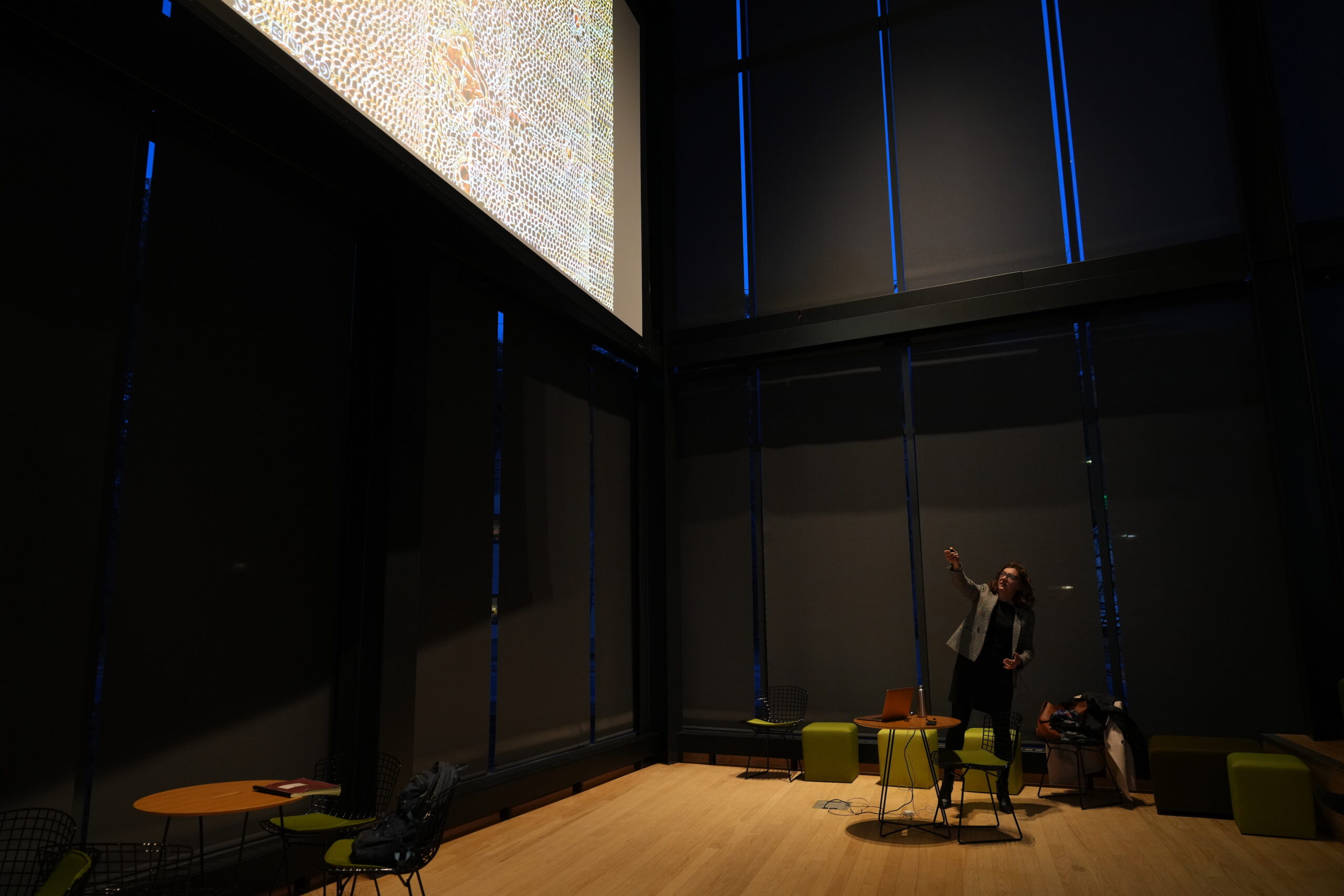Trouet talks of tree rings and climate connections
March 31, 2023
 Eliza Rhee
Eliza RheeDuring California’s drought in 2015, the state experienced exceptionally little snowfall, initially estimated to be the least in 80 years. On Thursday evening, Dr. Valerie Trouet explained to her audience in Roux Lantern how her research on tree rings uncovered the true extremity of this event, as her work revealed that this was a record low in over 500 years—a dramatic signal of climate change.
“For my research group, that was a game changer. We really realized that with our tree rings, we have the skill to answer some real life questions that urgently need answering,” Trouet said.
Trouet conducts research in dendrochronology, the science of precisely dating a tree ring to study patterns and changes in climate, at the University of Arizona’s Laboratory of Tree-Ring Research. By analyzing each year’s tree growth, her lab determines temperature and rainfall levels across regions during periods dating back over 2,000 years. Trouet explained that tree rings can inform our understanding of past climate conditions to put our current climate in context.
“That’s why I like talking about tree rings, because most people are familiar with the concept that trees form a ring every year,” Trouet said. “That means you can count the rings and get an idea of how old trees are. What fewer people know is that you can extract a whole lot more information from the same tree, amongst other information, about past climate.”
This dating not only provides information about the past, but provides evidence to how our current extremes in rainfall and temperature are human-caused and not natural fluctuations.
“Our current climate is influenced obviously by our emission of carbon dioxide into the atmosphere, but there is natural climate variability.… We’ve only started measuring temperature on a global scale with thermometers about 120 years ago, which is after the Industrial Revolution,” Trouet said. “So if we want to look and study natural climate variability, we need to go further back in time. That’s what we do with proxies, such as trees.”
Professor of Natural Sciences Barry Logan invited Trouet to campus. Logan is one of four key organizers of Bowdoin’s connection with Parable Path Maine, an initiative that provides a framework for community and artistic engagement based upon Parable of the Sower by Octavia Butler and led by Joseph McKeen Visiting Fellow Toshi Reagon. He wanted to facilitate an event that connected climate science with the themes of Butler and Reagon’s work such as human movement and resilience.
“The Parable of the Sower has a multitude of complex themes.… It has all these handles across the curriculum, and I was really interested in pursuing something that had scientific dimensions,” Logan said. “This may be explicitly the first science talk, but I think what you’ll find is that this talk has archaeology and human history and a lot more than just the science in it.”
Trouet and her peers’ research has been applied to a wide variety of topics including fluctuations in the jet stream in Europe and the effects of colonization on the environment. The power of tree ring research, according to Logan, lies in its ability to demonstrate how human activity and upheaval affects the natural world.
“We are in the midst of dynamic, accelerated change, but it’s not the first time that humankind has had to face dramatic change, either at a global scale or at regional scales,” Logan said. “[Trouet’s lab] can answer questions like nobody else because of their readiness to work in teams and to think across fields and to think across scales.”
Roger Wilder ’25 attended the talk and found it to be at the intersection of his academic interests. He was inspired by the ability of tree ring research to transcend the temporal boundaries of scientific research.
“Seeing the implications for being able to take science and look back into the past and then also kind of make interpretations for the future is really neat,” Wilder said. “I’m a biology major and a history minor. It’s really neat to be able to combine the biology and humanities, it kind of embodies the liberal arts aspects and it speaks to me a lot.”

Comments
Before submitting a comment, please review our comment policy. Some key points from the policy: